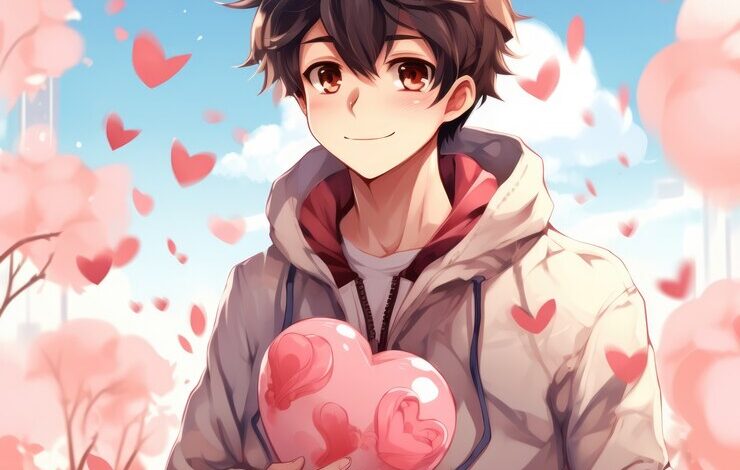Madly in Love: The Evolution of Yandere Archetypes in Pop Culture

Introduction to Yandere Archetypes
Yandere characters are a fascinating and complex archetype in pop culture, especially within the anime and manga communities. The term “yandere” combines the Japanese words “yanderu” (meaning “to be sick”) and “deredere” (meaning “loving or affectionate”). Typically, yandere characters start off as sweet and loving, but their love becomes obsessive, leading them to extreme and often violent behaviors.
For anime enthusiasts and pop culture aficionados, understanding yandere archetypes is not just about recognizing a character type—it’s about appreciating the depth and psychological complexity these characters bring to their stories. This blog post will delve into the origins, evolution, and impact of yandere characters. We’ll also break down their common traits and share insights from the fan community.
Historical Context
Origins in Anime and Manga
The concept of the yandere is deeply rooted in Japanese anime and manga. Some of the earliest examples can be found in 1980s and 1990s anime like “School Days” and “Mirai Nikki.” These characters captivated audiences with their dual personalities, embodying both innocence and madness.
Early Influences and Iconic Characters
Characters like Yuno Gasai from “Mirai Nikki” (Future Diary) and Kotonoha Katsura from “School Days” have become iconic in the yandere genre. Yuno, in particular, is often cited as the quintessential yandere, her actions driven by an intense and possessive love for the protagonist, Yukiteru.
Cultural Significance
Yandere characters hold a mirror to certain social anxieties and emotional extremes. Their portrayal often reflects broader themes such as the dangers of obsessive love and the thin line between affection and madness. This makes them not only entertaining but also culturally significant.
Pop Culture Impact
Evolving Portrayal
Over the years, the portrayal of yandere characters has evolved. Initially, these characters were often secondary or even hidden antagonists. However, as their popularity grew, yandere characters began to take on more central roles in stories, becoming protagonists in their own right.
Influence on Global Audiences
Thanks to the global reach of anime and manga, the yandere archetype has transcended cultural boundaries. Fans around the world are drawn to the intense emotional experiences these characters offer. Yandere elements have even appeared in Western media, highlighting their broad appeal.
Cross-Media Presence
The yandere archetype isn’t confined to anime and manga. These characters have made their way into video games, light novels, and even live-action adaptations. Their presence across various media forms underscores their versatility and enduring popularity.
Analysis of Yandere Tropes
Common Traits and Characteristics
Yandere characters share several common traits:
- Obsessive Love: Their affection for another character is all-consuming and often irrational.
- Dual Personality: They are usually sweet and caring on the surface but can quickly turn violent.
- Extreme Actions: To protect or possess their love interest, yandere characters resort to drastic measures, including violence.
Psychological Complexity

What sets yandere characters apart is their psychological depth. Their extreme behaviors often stem from past traumas or deep-seated insecurities. This complexity makes them fascinating subjects for character studies and adds layers to their narratives.
Subversion of Expectations
One of the intriguing aspects of yandere characters is how they subvert typical romantic tropes. While most love stories focus on mutual respect and affection, yandere stories explore the darker side of love, making them both unsettling and compelling.
Fan Community Perspective
Testimonials from Fans
The yandere fan community is passionate and diverse. Many fans are drawn to the emotional intensity and psychological complexity of these characters. Here are some insights from the community:
- Anna, 24, USA: “I love yandere characters because they keep you on the edge of your seat. You never know what they’ll do next.”
- Kenji, 31, Japan: “Yanderes add a layer of unpredictability to any story. Their love is extreme, but it’s fascinating to see what drives them.”
- Mia, 19, UK: “Despite their flaws, yandere characters often have touching backstories that make you empathize with them.”
Online Communities and Forums
Online platforms like Reddit, Tumblr, and specialized forums are buzzing with discussions about yandere characters. Fans share fan art, write fan fiction, and engage in heated debates about the best yandere moments in anime and manga.
Conventions and Meetups
Yandere fans also gather at conventions and meetups to celebrate their favorite characters. These events often feature panels, cosplay competitions, and merchandise stands dedicated to yandere themes, fostering a sense of community and shared enthusiasm.
Conclusion
Yandere characters offer a unique and thrilling perspective on love and obsession. Their evolution from secondary roles to central figures highlights their growing significance in pop culture. For anime enthusiasts, pop culture aficionados, and yandere fans, these characters provide a rich tapestry of emotional and psychological experiences.
Understanding the complexities of yandere characters can deepen your appreciation for the narratives they inhabit. As you explore more stories featuring these fascinating characters, you’ll find that their intense emotions and unpredictable actions make for some of the most memorable moments in anime and manga.
So, whether you’re a seasoned fan or new to the world of yandere, there’s always more to discover. Dive into the darkly captivating world of yandere characters and see why they continue to enthrall audiences worldwide.



